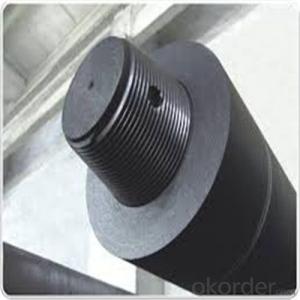When we talk about the chemistry of graphite electrode production, it’s like diving into a world of mystery and wonder. It’s a journey that starts with a simple element, carbon, and transforms it into a versatile material that’s used in everything from batteries to steel production. But let’s not get ahead of ourselves. Let’s start from the very beginning, shall we?
The first step in this fascinating process is the selection of raw materials. It’s like choosing the perfect ingredients for a recipe. The raw materials used in the production of graphite electrodes are petroleum coke and needle coke. These are the starting points, the building blocks, if you will, of our graphite electrodes. They are chosen for their high carbon content and low sulfur and metal content. It’s like picking the freshest vegetables for a salad, ensuring that the final product is as pure and high-quality as possible.
Next, we move on to the calcination process. This is where things start to get interesting. The raw materials are heated in the absence of air, which removes any volatile impurities and increases the carbon content. It’s like roasting coffee beans, where the heat brings out the rich flavors and removes any unwanted elements. The result is a material that’s ready for the next step in the process.
The calcined material is then ground into a fine powder, which is mixed with coal tar pitch. This is the binder that holds everything together. It’s like adding flour to a cake mix, giving it structure and stability. The mixture is then pressed into blocks, which are baked at high temperatures to remove any remaining volatiles and increase the density of the material. It’s like baking a cake, where the heat and time create a firm and stable structure.
Now, we come to the heart of the process, the graphitization. This is where the magic happens. The baked blocks are heated to temperatures of around 3000°C in an electric furnace. This extreme heat transforms the material into graphite, a crystalline form of carbon that’s highly conductive and has a unique structure. It’s like watching a caterpillar transform into a butterfly, where the heat and pressure create something beautiful and powerful.
The final step is the purification and sizing of the graphite electrodes. The graphite is purified to remove any remaining impurities, and then it’s cut and shaped into the final product. It’s like carving a sculpture from a block of marble, where each cut and shape brings the final product closer to its intended form.
Throughout this entire process, there’s a sense of awe and wonder at the transformation that occurs. From a simple element to a complex and powerful material, the chemistry of graphite electrode production is truly a marvel to behold. It’s a testament to the power of human ingenuity and the endless possibilities that can be achieved through science and technology.
So, the next time you see a graphite electrode, remember the journey it took to get there. From the selection of raw materials to the extreme temperatures of graphitization, each step is a crucial part of the process that creates this incredible material. And who knows, maybe one day you’ll be the one to discover a new application for this versatile and powerful substance.

